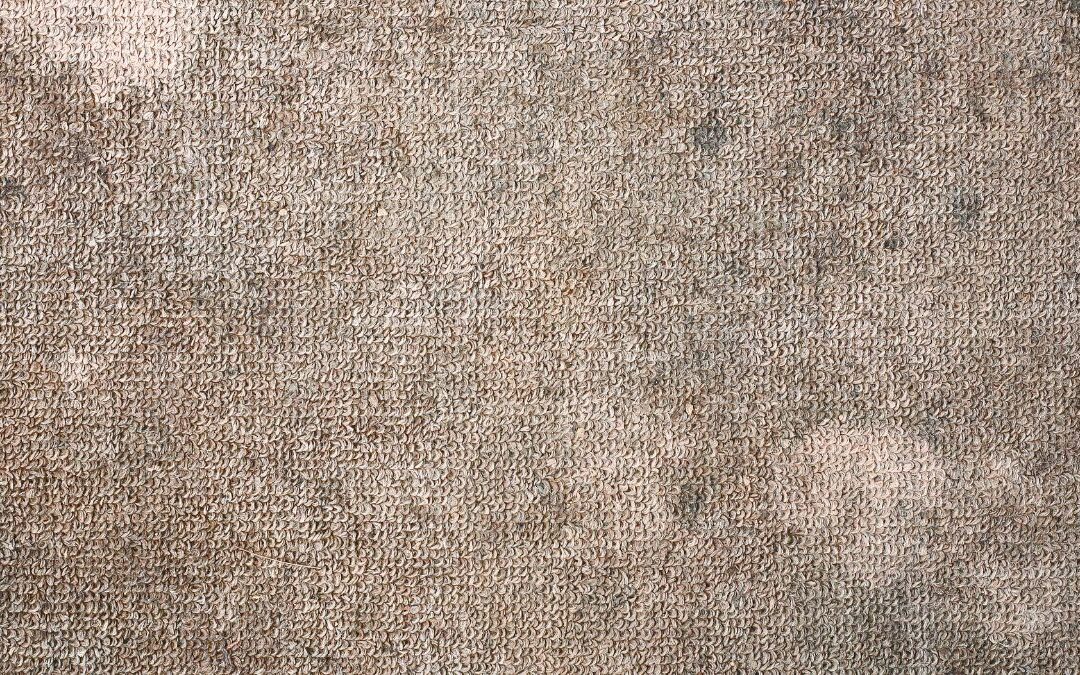The very mention of mold can send shivers down the spines of many homeowners. Mold may smell, leave ugly discolorations, and cause severe health problems. Some mold growths are so bad that they can send you and your family members to the hospital. Let’s look at how mold takes over carpets, how you can catch it before it gets out of hand, and how to prevent it from taking hold in your home.
Mold on Carpet: Growth, Signs, & Prevention
An Out-of-Sight Infestation-Mold
Mold can grow quickly and doesn’t require much to spread in your home. It attacks carpets if they happen to be in an area with moisture, such as a basement or near a window. Leaks can cause the problem or be an issue for homes in high-humidity climates. When moisture enters the carpet fibers and underlayment, you can have a mold problem.
The mold spores infest the fibers and start growing at an alarming rate. The worst part? Mold won’t just stay put. It’s like that unwanted houseguest who calls their friends over without asking you.
If left unchecked, mold spreads beyond the carpeting into the rest of your home. The spread increases the risk of property damage and health issues from severe mold infestations.
Health Issue Symptoms From Mold
Mold in the home has the potential to make you sick. Touching or inhaling mold spores can cause an allergic reaction. According to the CDC, mold can cause a variety of health issues including:
- Stuffy Nose
- Wheezing
- Sore throat
- Coughing
- Burning eyes
Individuals with asthma or other allergies have the potential for a more severe reaction. The CDC recommends keeping humidity levels low and fixing plumbing and roof leaks. Also, ensure air flows freely in the home. Poor air quality can contribute to illness.
How To Spot Mold on Carpets Before It’s Too Late
The most immediate sign of mold infestation is the musty smell. If it starts to smell like your home has an old, damp basement, it’s time to inspect the carpet closely.
Another major warning sign is the discoloration of the fibers in the carpet. Mold can cause black, green, or even white spots on your carpet, letting you know something sinister is growing underneath. The discoloration may be subtle in the beginning, but it’s a surefire sign that mold is taking hold.
Allergic reactions in your household could be another indicator of mold infestations in the carpets. If you’re sneezing or coughing, or you have had itchy eyes lately, it might not be from seasonal allergies. These symptoms are caused by mold spores and can make you incredibly sick, depending on the mold strain and its pathogenic toxicity.
Finally, if you notice a damp carpet or you have a wet carpet for no reason, it’s most likely due to moisture trapped inside the fibers and padding. It’s a breeding ground for mold, so attend to it before it’s too late.
How to Keep Your Carpet Mold-Free
Keep moisture under control and ensure rooms are below 60 % RH (relative humidity). Run the dehumidifier in these rooms if you have damp areas such as cellars. If you spill anything on the installed carpet, clean the area immediately and ensure the carpet is dry.
Proper ventilation keeps the air circulating in your home. That’s important in the kitchen and bathroom, two rooms where moisture easily gathers in the air. Regular vacuuming keeps your carpet clean and free from mold. Have the carpet professionally cleaned once or twice a year to keep it in good condition.
If you have a mold problem and need to remove mold from the carpet, hire a professional and have it done right. Experts know what they are looking for and can find any hidden problems.
Nebraska’s Best Carpet Cleaning
With fifteen years of experience in residential and commercial carpet cleaning, you can count on us to get the job done right the first time. Take advantage of our in-depth and affordable cleanings today to see what makes us Nebraska’s Best!
If you’re looking for professional water damage extraction, upholstery cleaning, rug cleaning, commercial carpet cleaning, or residential carpet cleaning in Lincoln, NE, then contact us today for a free quote.

